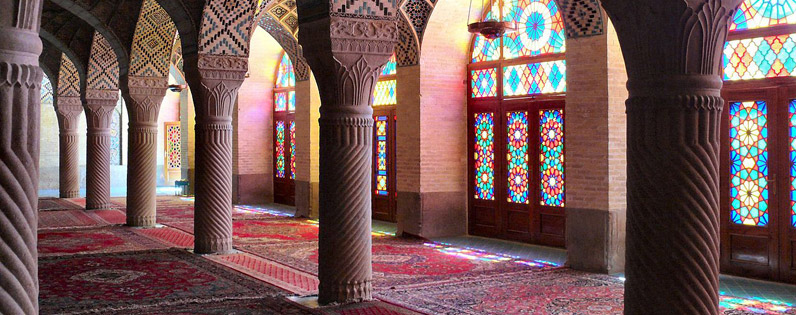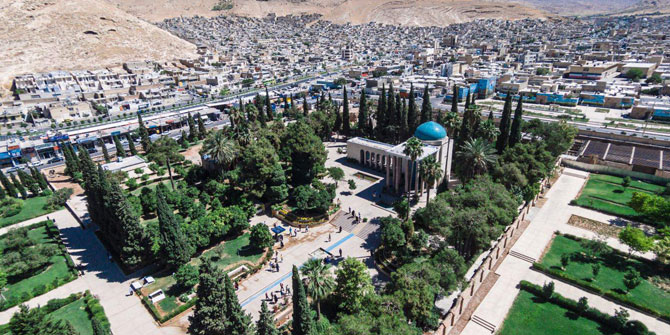About Nasir ol-Molk Mosque
Nasir ol-Molk Mosque is one of the old mosques of Shiraz that is located in Gowd-e Araban neighborhood. It has been built in Qajar Period to the order of Mirza Hassan Ali Khan, known as Nasir ol-Molk, one of the nobles of Shiraz. This mosque is one of the precious mosques of Iran in terms of tile work, and since colored glass is used in it, it is also known as the Pink Mosque. The main entrance is adorned with seven-color tiles with a design of rose and iris flowers of Shiraz. The mosque has a wide square courtyard in the middle of which there is a pool. Nasir ol-Molk Mosque has two porches namely the north porch with a height of 8 meters, and the south porch which is constructed to give symmetry to the north porch.
Nasir ol-Molk Mosque has two shabistans[1], one on the west and the other on the east and the west shabistan has brick work walls. It is more adorned and beautiful. The arch of this shabistan is positioned on spiral stone pillars in two rows of six with a number of 12 pillars after 12 Imams. In addition, this shabistan has seven wooden doorways with colorful glasses that connect it to the courtyard of the mosque. The arch and walls of this shabistan are adorned with beautiful tile work and the floor is adorned with turquoise tiles and the ceiling with flowers and plants patterns as well as some ayahs of the Qur'an. This shabistan is in fact the summer shabistan, where there is an elegant altar. The east shabistan is the winter shabistan where there are seven plain pillars without any patterns. In front of the east shabistan, there is a porch which is separated from the courtyard of the mosque though eight arcades. On the north side of the mosque, there is an arcade called the Pearl Arc the ceiling, floor and outside of which is covered with tile work with some ayahs of the Qur'an written on them. On the south side of the mosque, there is also an arcade the height of which is shorter compared to the Pearl Arc the inside and outside of which is covered with tile work and its ceiling is adorned with muqarnas.
[1] An underground space that can be usually found in traditional architecture of mosques, houses, and schools in ancient Persia.


